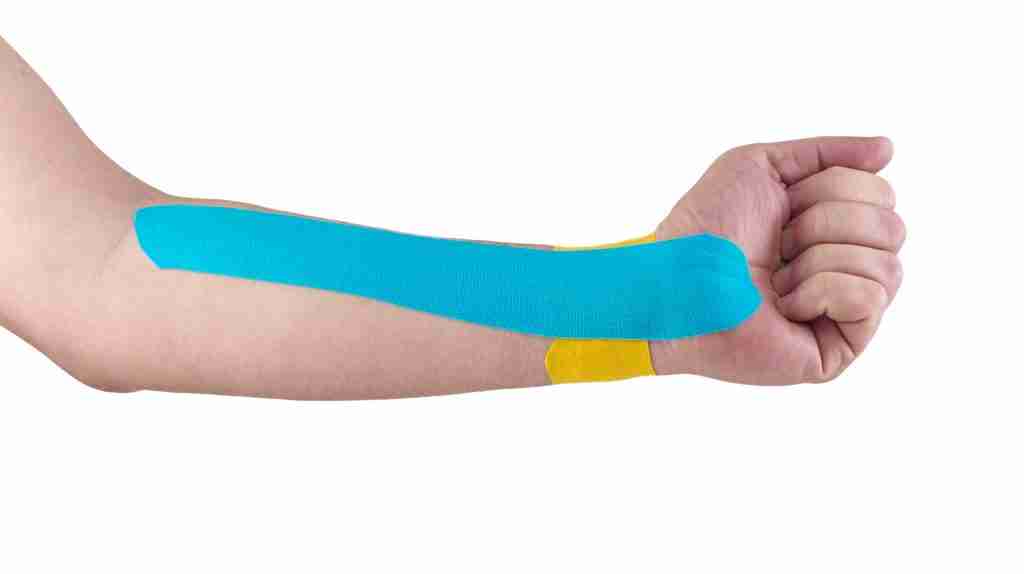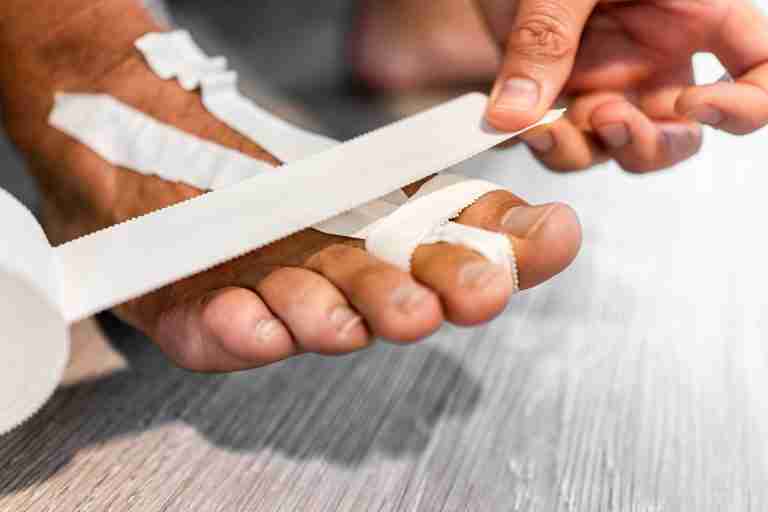7 Important Guidelines For Choosing An Athletic Tape For Wrist Injuries
In this post, we will provide suggested guidelines for choosing the best athletic tape for wrist injuries. We will begin by describing how using athletic tape for wrist injuries differs from using it for other types of injuries. We will then move on to suggest 7 guidelines for choosing the best athletic tape for a wrist injury.
Introduction
For athletes and other physically active individuals, the use of athletic tape to treat repetitive stress injuries such as carpal tunnel syndrome has many advantages. Unlike using a wrist brace, athletic tape is low profile and will not interfere (to the same extent as a wrist brace) with everyday activities such as writing or typing on a computer.
However, one thing that athletic tape does share with using a wrist brace is the need to sift through a large variety of choices to find the one best suited for your needs. Athletic tape comes in many different forms such as kinesiology tape, cohesive tape, elastic adhesive tape, etc. For optimal results, the choice of the correct type of tape is important.
How Is Choosing Athletic Tape For Wrist Injuries Different Than For Other Areas?
Choosing an athletic tape for wrist injuries may differ from selecting one for other parts of the body due to the specific needs and characteristics of the wrist joint. Here are a few factors to consider:
- Joint Mobility: The wrist joint requires a balance between stability and mobility. Unlike certain areas of the body that may require more rigid support, such as the ankle or knee, the wrist benefits from a tape that provides stability while still allowing a certain degree of movement and flexibility.
- Range of Motion: Consider the range of motion required for your sport or daily activities. Depending on the severity of the wrist injury, you may need to limit certain movements or allow for a greater range of motion. Elastic tapes, such as kinesiology tape, are more suitable for wrist injuries that require some flexibility and freedom of movement.
- Functional Support: Assess the specific activities you need to perform with your wrist. If you require strong support and immobilization, such as during heavy lifting or when the wrist needs to be completely stabilized, a rigid tape with limited stretch, like zinc oxide tape, may be more appropriate.
- Adhesive Strength: The wrist area can be prone to sweat, moisture, and movement, which can affect the adhesive properties of the tape. Consider tapes with reliable adhesive strength that can withstand these conditions and maintain their hold during sports or physical activities.
- Skin Sensitivity: The skin on the wrist can be sensitive, making it important to choose a tape that is hypoallergenic, gentle on the skin, and less likely to cause irritation or allergic reactions.
- Size and Width: The size and width of the tape can impact its effectiveness in providing support and stability to the wrist. Ensure that the tape is wide enough to cover the desired area and that it can be applied securely without compromising comfort or blood circulation.
- Application Technique: Taping techniques for the wrist may differ from those used for other parts of the body. It’s essential to learn and follow proper taping techniques specific to the wrist to ensure optimal support and desired outcomes.
Ultimately, the selection of athletic tape for wrist injuries should be based on the guidance and recommendations of a healthcare professional or an experienced athletic trainer. They can assess your specific injury, provide appropriate taping techniques, and help determine the best tape for your needs.
Guidelines For Choosing An Athletic Tape For Wrist Injuries
When choosing an athletic tape for wrist injuries, it’s important to consider factors such as the severity of the injury, the desired level of support, and the specific requirements of the sport or activity. Here are 7 guidelines to help you choose the appropriate athletic tape for wrist injuries:

- Consult a Healthcare Professional: If you have a wrist injury, it’s recommended to consult a healthcare professional, such as a sports medicine physician, physiotherapist, or athletic trainer. They can assess the injury, provide a diagnosis, and offer guidance on the appropriate taping technique and materials.
- Understand the Injury and Support Requirements: Gain an understanding of the nature and severity of your wrist injury. Consider the level of support and stability required based on the recommendations of the healthcare professional. Different wrist injuries may require different levels of support, ranging from mild to maximum stability.
- Research Different Types of Athletic Tape: Familiarize yourself with the various types of athletic tape available for wrist injuries. The most commonly used tapes for wrist injuries include rigid tape and elastic tape. a. Rigid Tape: Rigid tape, also known as non-elastic or zinc oxide tape, provides strong support and stability. It is ideal for immobilizing the wrist joint and limiting excessive movement. Rigid tape is commonly used for more severe injuries or during the later stages of rehabilitation. b. Elastic Tape: Elastic tape, such as kinesiology tape or cohesive bandage, offers moderate support while allowing some flexibility and range of motion. It can help relieve pain, improve blood flow, and provide proprioceptive feedback. Elastic tape is often used for milder injuries, during early stages of rehabilitation, or for preventive taping purposes.
- Consider Material and Adhesive Quality: Look for athletic tapes that are made of high-quality materials and have good adhesive properties. Ensure that the tape is hypoallergenic and gentle on the skin, preventing irritation or allergic reactions.
- Evaluate Ease of Application: Consider the ease of application and removal of the tape. Some tapes may require a specific taping technique, while others have pre-cut designs or instructions that make application easier. Choose a tape that suits your comfort level and skill in applying the tape yourself or with the assistance of a trained professional.
- Test and Trial: If possible, try different tapes to determine which one provides the desired level of support and comfort. Experiment with different taping techniques and assess how the tape feels during movement and activities specific to your sport or daily routine.
- Seek Expert Advice: If you’re uncertain about the selection or application process, don’t hesitate to consult a healthcare professional or an experienced athletic trainer. They can offer guidance, demonstrate proper taping techniques, and address any concerns or questions you may have. The effectiveness of athletic tape is critically dependent on using the proper application techniques. The video above illustrates the proper application of kinesiology tape for a wrist injury.

Remember, athletic tape is not a substitute for proper medical care. It is recommended to follow the advice and treatment plan provided by your healthcare professional, which may include taping as a part of a comprehensive rehabilitation program.
Conclusion
In this post, we have presented information to help you choose the correct type of athletic tape for a wrist injury. We hope you have found this information useful. However, please understand that the information presented above is based on our opinions and should not be regarded as a substitute for professional medical advice. The best advice on how to treat your wrist injury will come from a professionally qualified healthcare provide such as a doctor or physiotherapist.
If you have any questions or comments on the information presented above, please submit them below and we will respond as soon as possible.







